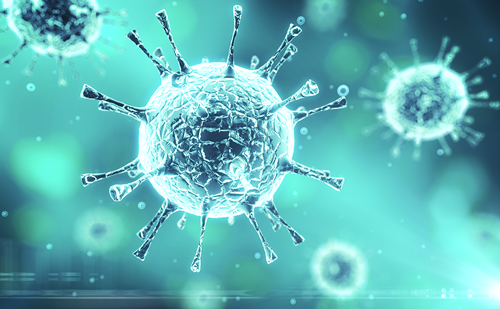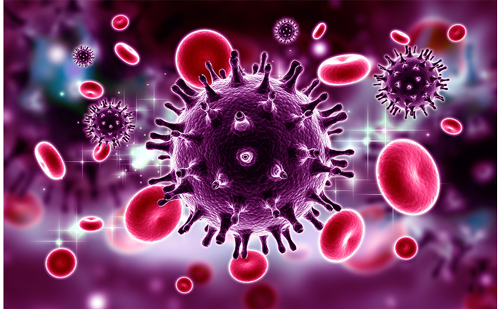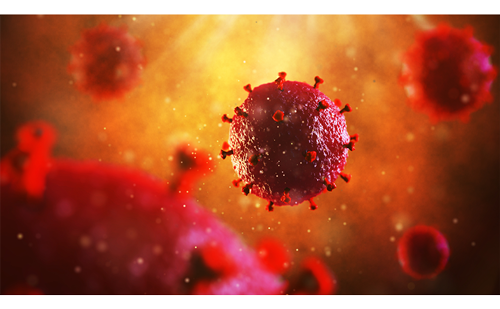Initial attempts to develop a HIV vaccine focused on creating a vaccine that would generate neutralizing antibodies against the virus, using portions of the HIV envelope from prototype laboratory isolates. The initial attempts using monomeric envelope proteins of largely laboratory adapted strains of HIV were unsuccessful due to their structural dissimilarities to the native HIV envelope trimer, as well as the high genetic variability of the HIV virus and its ability to mutate rapidly, allowing it to evade the human immune system. Increasing knowledge about what parts of the virus are associated with eliciting broadly neutralizing antibodies as well as the use of new viral delivery platforms such as mRNA, viral vectors and protein nanoparticles, have brought new insights into the vaccine design field.¹
Several HIV vaccine candidates are under investigation in clinical trials. These candidates include protein-based vaccines that use various strategies to stimulate an immune response against the virus, as well as viral vector-based vaccines that deliver HIV genes to cells to trigger an immune response. Additionally, there are ongoing trials evaluating the efficacy of broadly neutralizing antibodies in preventing HIV infection (ClinicalTrials.gov identifiers: NCT03928821; NCT03387150; NCT05184452).²–⁴ Whilst progress has been made, developing an effective HIV vaccine remains a challenging task and continued research and clinical trials are necessary to identify the most promising vaccine candidates.
In this expert interview, Dr Lawrence (Larry) Corey joins us to discuss the history of HIV vaccine development, what recent clinical trials have taught us about the development of a HIV vaccine, key findings of the antibody mediated prevention trials and how they contribute to our understanding of HIV-1 broadly neutralizing antibodies prevention, and future directions.
Q. Could you provide a brief overview of the history of HIV vaccine development?
HIV vaccination has been a major scientific challenge, nobody anticipated the complexity of the virus with respect to its ability to evade the human immune response and difficulty to neutralize. Some of the challenges are due to the enormous genetic diversity of the virus, some of which we have now learned is due to the virus’s employment of a variety of increasingly complex decoy strategies, many of which are associated with variations in the glycan shield that surrounds the virus envelope. HIV is unlike coronavirus disease 2019 (COVID-19), respiratory syncytial virus or flu, where the human immune system has the ability to self cure the virus, and hence vaccination can largely mimic the natural human immune response to the virus. In HIV, we humans do not know how to cure HIV and hence vaccines must enter into a new immunological paradigm. Lawrence Corey Dr Lawrence (Larry) Corey is an internationally renowned expert in virology, immunology and vaccine development, and the former president and director of Fred Hutch. His research focuses on herpes viruses, HIV, the novel coronavirus disease 2019 (COVID-19) and other viral infections, including those associated with cancer. He is principal investigator of the HIV Vaccine Trials Network (HVTN), which conducts studies of HIV vaccines at over 80 clinical trial sites in 16 countries on five continents. Under his leadership, the HVTN has become the model for global, collaborative research. Dr Corey is also the principal investigator of the Fred Hutch-based operations centre of the COVID-19 Prevention Network (CoVPN) and co-leads the network’s vaccine testing pipeline. Dr Corey’s own laboratory group at Fred Hutch studies how immune cells control herpes simplex virus. Their goal is to make a vaccine that will reduce the virus’s reactivation. In the early 1980s, he worked with future Nobel laureate Dr Gertrude Elion in the development of acyclovir as the first effective therapy for genital herpes. As leader of the Executive Committee of AIDS Clinical Trials Group, he led the organization that eventually proved combination antiretroviral treatments could control HIV. The team also demonstrated that these drugs could reduce transmission of HIV from mothers to their infants. His research also showed that HIV-1 replicates in blood early in disease, emphasizing the importance of early therapy.
The guideposts for a HIV vaccine are also quite imperfect. While the nonhuman primate (NHP) challenge model has provided enormous insights into the pathogenesis of the disease, it has not been an accurate predictor of vaccine efficacy. Unfortunately, vaccines that appear to protect in NHP challenge models and even mimicked the NHP immune response associated have not been effective in humans.⁵ One explanation for these results is that the challenge viruses to the animal was a standardized stock of virus that does not possess the complexity and diversity of the viruses that are circulating in the human space. Therefore, these current models have not been an effective predictive model for vaccine development. The lessons learnt are that we need to come back to the basic principles of vaccine development. Vaccines need to be developed that create neutralizing antibodies to a very broad range of circulating strains of HIV globally. While this is a challenge, we do know that this is now achievable.
In 2015, a set of trials set out to discover if neutralizing antibodies could prevent acquisition by passively immunizing broadly neutralizing antibodies, and assessing efficacy in blocking HIV acquisition.⁶ This was successful but it showed that large amounts of antibody were required; however, it established the concept and provided the means to develop a neutralizing antibody-based vaccine.
Q. What have recent clinical trials taught us about the development of a HIV vaccine, and what questions remain unanswered?
Currently, we cannot create a vaccine that elicits non-neutralizing antibodies and is clinically effective. This does not necessarily mean that non-neutralizing antibodies play no role, however it does suggest the technologies currently in use are not good enough and do not have any clinical benefit. Trials have shown the ability to block acquiring HIV with a broadly neutralizing antibody, which shows the need for a vaccine that develops broadly neutralizing antibodies.⁶
When we look at COVID-19 mRNA vaccines, these vaccines elicit broadly neutralizing antibodies against the circulating strains and have shown to be highly effective at preventing COVID-19 infection and severe disease in clinical trials.⁷–⁹ However, when the COVID-19 virus (severe acute respiratory syndrome coronavirus 2 [SARS-CoV-2]) mutated, the efficacy lessened.¹⁰ Therefore, those principles of vaccinology are still holding. The problem that occurs with HIV is that it takes a lot more antibodies to prevent acquisition than COVID-19, probably 50 times more than COVID-19 vaccines.¹⁰ Another HIV vaccine strategy is based on soluble stabilized trimer spikes for inducing broadly neutralizing antibodies. An issue with the human immune system is that it does not easily produce broadly neutralizing antibodies as the maturity of that antibody requires a certain combination of unusual mutations and as such they need to be enhanced to foster their development. Therefore, we have to learn how to awaken the human response so that individuals develop these antibodies more frequently.
Q. What were the key findings of the antibody mediated prevention trials, and how do they contribute to our understanding of HIV-1 broadly neutralizing antibodies prevention efficacy?
The antibody mediated prevention trials were landmark trials aiming to evaluate the safety and efficacy of a monoclonal antibody in preventing HIV infection in different populations.⁶ They showed that we could administer a neutralizing antibody and prevent acquisition, especially among the strains susceptible to the antibody; however, not all strains are susceptible to the antibodies. This occurred in both males and females and in various populations worldwide including sub-Saharan Africa, Latin America and the USA. Therefore, irrespective of region and route of transmission, the efficacy was related to whether the strains were susceptible to the broadly neutralizing antibody. If they were, there was about 75% protection over the duration of the trial, therefore, it is analogous to the first antiretroviral therapy.⁶ Although, it is a little different in that it was a single drug that worked for a shorter period with partial efficacy. With antiretroviral therapy multiple drugs were required to target the virus at different sites. What we have learnt is that we now need multiple broadly neutralizing antibodies to enable very high efficacy in preventing acquisition. Those studies are commencing using three broadly neutralizing antibodies and are going to assess if passive installation of these antibodies can prevent HIV from being acquired.⁴
These trials are important for developing a vaccine as it is easier to acquire a shot with a single vaccine that lasts a long period of time than to receive antibodies every 6 months, which is achievable but not as attractive as a vaccine. Therefore, the goal of HIV vaccine development is to make a good quality vaccine that is able to elicit broadly neutralizing antibodies.
Q. What do you consider the future directions in the development of a HIV vaccine?
The science of HIV vaccine development has become rather sophisticated and that gives us optimism that there is scope to develop a vaccine. First, we need to awaken the immune response. An HIV vaccine regimen is likely to require three to four injections in which each injection is a different variant of HIV in order to guide the development of these broadly neutralizing antibodies. To mature the body’s immune response, a slightly different immunogen must be given each time a shot is administered, which is the new complexity in the development of HIV vaccines and is inevitably where the field of research is heading.
Thus far, trials have shown success in awakening the germline and are now working on the second and third shot. 11 I do not doubt that we will develop a HIV vaccine candidate, though it will take another 4–5 years to achieve a regimen that is worthwhile testing, such as in the MOSAICO and Imbokodo HIV vaccine development trials.












